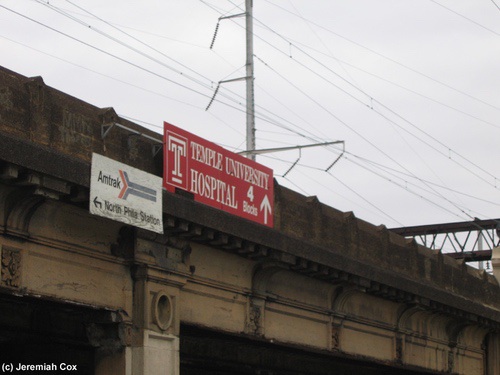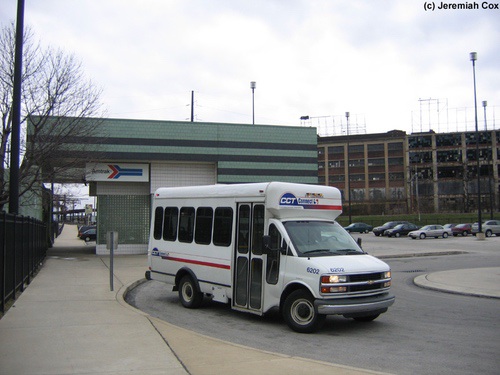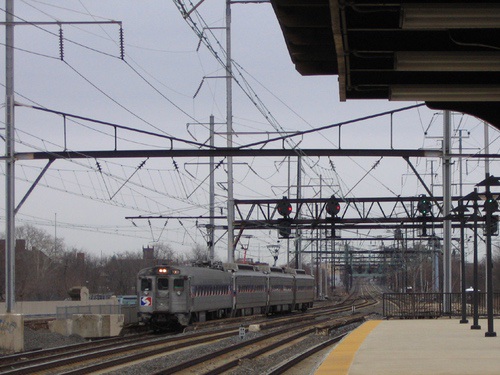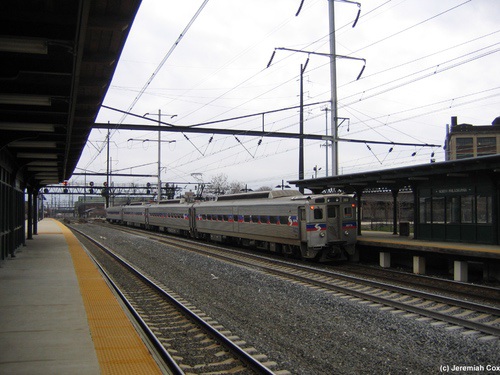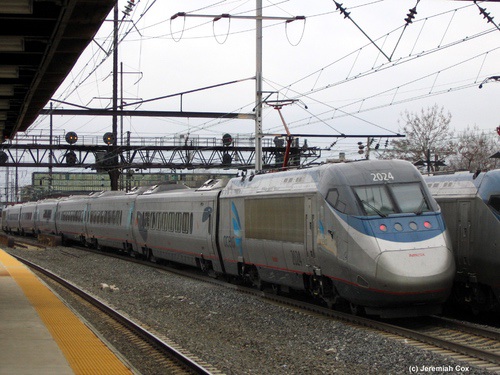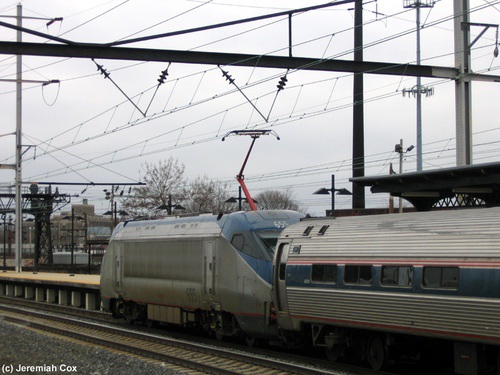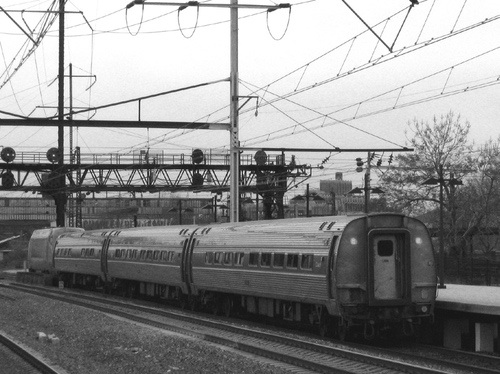



 Philadelphia, PA-30th St Station Philadelphia, PA-30th St Station | Keystone Service | Cronwells Heights, PA  |
North Philadelphia was once an important Pennsylvania Railroad long-distance station for the City of Philadelphia. It was the primary stop for all through long distance trains in the City of Philadelphia to avoid the reverse move into and out of Broad Street Station. The opening of 30th Street Station in 1933 created through tracks and platforms for New York to Washington, DC long-distance trains. Long Distance trains to/from New York to the former Pennsylvania Railroad Main Line to Harrisburg, Pittsburgh and Chicago to this day continue to have to reverse direction to stop at 30 Street Station to service Downtown Philadelphia.
The required back-up move into and out of Philadelphia resulted in North Philadelphia continuing to be an important Station into the Amtrak era. The stop was the only station in the City of Philadelphia for the long-distance National Limited and the more iconic now-discontinued Broadway Limited until 1978. At this time the Washington sections of both trains were rerouted away from the Post Road Line to run via Philadelphia with two sections operating separating on the main line from Harrisburg to Zoo Junction with the New York sections still stopping at North Philadelphia. By 1980 the National Limited was discontinued, and the Broadway Limited's Washington thru cars were now separated at 30th Street Station in Philadelphia (with the train now running backwards between New York and Philadelphia). The North Philadelphia stop was also discontinued on the Broadway Limited at this time.
The station remained as an intermediate stop on many non-Metroliner New York to Washington trains until the mid-1990s. This included the Carolinian to Charlotte in its early years, and the Pennsylvanian to Pittsburg at various times. Throughout the 1990s and 2000s service to North Philadelphia was gradually reduced to only Keystone Trains along with all Clocker trains before they were discontinued in 2005, with the last train between New York and Washington train stopping at the station in the mid-2000s.
As of 2024, one New York-bound Keystone Service train in the AM Rush hour, and two returning trains in the PM rush hour stop at the station. There is no weekend service. The stop still receives hourly SEPTA Trenton Line Service, and Chestnut Hill West service at the nearby connecting platforms. All other Amtrak trains along with NJ Transit Atlantic City Line trains pass through but bypass the station. The Atlantic City Line has never stopped at the station.
The station is a short distance away from the North Philadelphia Broad Street subway station. There was once a direct underground connection between the station and the Broad Street subway, but this tunnel is long closed. The North Broad Station on the ex-Redding SEPTA Regional Rail Lines is also a short walk away with the ex-Redding Lines pass directly under the Northeast Corridor (and Chestnut Hill West Line) just south of the station platforms. There is potential to build a junction station for both lines if there was ever a political will to invest in this area, unfortunately today the station is a run-down shell of what was once a grand station covered in graffiti, feces, and drug paraphernalia. The stop should be ADA accessible; Amtrak who still owns the station has closed the elevators due to vandalism, with no plans to replace them. This is in complete violation of the ADA civil rights law.
The station itself contains two long and modern high-level island platforms for five-tracks through the station area. The northern island platform is technically a side platform with the former outside track now removed. The track configuration is as follows from north to south: Platform-Electrified NEC Track-NEC Track (doesn't platform)-NEC Track-Platform-NEC Track-Unelectrified Freight Track. The station received high level platforms in the 1910s as the important secondary and junction station for the City of Philadelphia.
The platforms each are canopied in their mid-sections with nicely painted green columns holding up the canopies. White text spells out North Philadelphia as the station's only signs on the wind screened waiting rooms in the middle of each platform. Inside these little waiting areas are benches that lead down to a single staircase from each platform down to the original (from the 1910s) pedestrian tunnel to leave the station. Arriving at the pedestrian tunnel passengers are directly across from a plywood wall that covers what was the elevator shaft up to each platform. The upper landings of the former elevators are surrounded by green windscreens and another plywood wall. There is also evidence of another tunnel towards the southern end of the platforms that may have been primarily used for baggage (with larger baggage elevators up to each platform).
Leaving the station to the south, a few steps lead outside to the backside of the historic 1901 station house. This historic multi-level station house is designed to look like a historic French-Chateau. It is an architectural beauty. Large columns hold up arched windows, on each side of a Central Colonnade. Pennsylvanian RR is etched in the concrete above the central columns. Today it contains the AZ Budget Discount Store, with a false ceiling-tiles ceiling removing any history from the inside of the depot. AZ Budget Discount store is the anchor of a modern strip-mall-style development with a row of shops that extends to nearby Broad Street and a Broad Street Line North Philadelphia Station entrance, a parking lot for these businesses is between the station and Glenwood Avenue to the south.
Going north through the tunnel passengers go under a set of historic columns to reach the street. This side of the station contains the abandoned second station house that Amtrak built in the late 1980s and staffed until 2001. The most notable part of this boxy building contains a roof that overhangs the start of the pedestrian tunnel. Today the building has boarded up window areas painted white, along with a very odd mixture of black and green tiles. These run along most of the sides of the building, plus some areas with more simple beige tiles or just painted white walls.
This newer building was built on what was once the station's taxi-loop, with a remaining passenger pick-up and drop off loop. The area beyond here leads out to a large parking lot with what SEPTA claims are just 100 spaces, but judging from the side of the lot I believe there are many more parking spaces. Amtrak's website lists the parking situation as simply 'unknown'. Due to safety and security concerns at the station and in the area, the parking lot is always empty and very much a “park at your own risk” type of location. Cars coming to drive donuts around the parking lot are a more common use of the lot.
Just south of the southern end of the platforms (along the railroad line) is the historic Lehigh Interlocking tower. This is tower controlled the junction where the Chestnut Hill West Line meets the Northeast Corridor at a level-junction, with no flying crossovers or grade-separation.
Photos 1-22: March 31, 2005; 23-35: October 19, 2012; 36-73: April 10, 2013;
